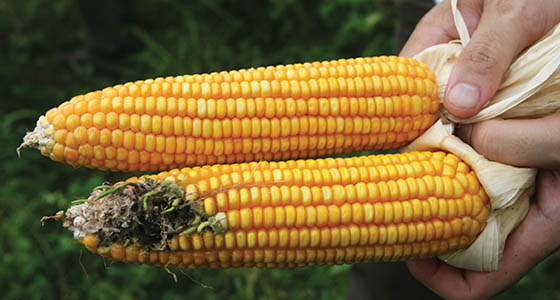Understanding GMOs: Science, Benefits, and Controversies

past few decades, GMOs have become a critical part of the global food supply, shaping how crops are grown and how food is produced. While hailed for their potential to solve some of the world’s most pressing agricultural challenges—such as food security, malnutrition, and the sustainability of farming—GMOs also spark fierce debate. Critics point to potential health risks, environmental concerns, and ethical issues, which have led to strong opposition in various sectors.
This article provides a comprehensive exploration of GMOs, including their history, scientific basis, benefits, risks, and the societal debates surrounding them.
What are GMOs?
Genetically Modified Organisms (GMOs) refer to organisms whose genetic material has been altered using genetic engineering techniques. This modification typically involves adding, removing, or editing specific genes to achieve desired traits in plants, animals, or microorganisms. In the case of agricultural crops, common modifications include resistance to pests, tolerance to herbicides, and improved nutritional content.
Unlike traditional breeding techniques, which rely on the natural reproductive process to pass on desirable traits, genetic engineering allows scientists to directly alter the DNA of an organism in a more precise and controlled manner. This enables the introduction of traits that may not occur naturally or would take years to develop through conventional methods.
A Brief History of GMOs
The concept of altering crops for better yields and disease resistance is not new. Humans have been selectively breeding plants and animals for thousands of years. However, the first genetically modified organisms using modern biotechnological methods appeared in the 1970s.
- 1973: Stanley Cohen and Herbert Boyer developed recombinant DNA technology, a method to cut and paste genes from one organism to another.
- 1982: The first GMO product approved by the FDA was insulin, produced by genetically engineered bacteria.
- 1994: The Flavr Savr tomato became the first genetically engineered food crop to be approved for human consumption in the United States. The tomato was modified to have a longer shelf life by slowing down its ripening process.
- Late 1990s: The adoption of GMOs in agriculture began to expand rapidly. Crops such as soybeans, corn, and cotton were among the first to be genetically engineered for pest resistance and herbicide tolerance.
How GMOs are Created: The Science Behind Genetic Modification
The process of creating a GMO involves several key steps, each designed to target specific traits in the organism.
- Gene Identification: Scientists first identify the gene responsible for the desired trait. This gene may come from the same species or an entirely different organism. For example, a gene from a bacterium may be used to make a plant resistant to pests.
- Gene Isolation: Once identified, the gene is isolated from its original organism using molecular biology techniques such as restriction enzymes or CRISPR-Cas9, a precise gene-editing tool.
- Gene Insertion: The isolated gene is inserted into the target organism’s DNA. This can be done using vectors such as plasmids, viruses, or gene guns that inject the DNA directly into the plant cells.
- Selection and Testing: After the genetic material is introduced, scientists grow the modified organism and test it to ensure that the desired trait is expressed. The organism is subjected to numerous tests to confirm that the genetic modification is stable and effective.
- Regulatory Approval: GMOs undergo rigorous evaluation by regulatory agencies such as the U.S. Food and Drug Administration (FDA), the Environmental Protection Agency (EPA), and other global counterparts before they can be approved for commercial use.
Benefits of GMOs
GMOs have brought a range of benefits, especially in agriculture, where they have contributed to increased crop yields, enhanced food security, and reduced environmental impact.
1. Increased Agricultural Productivity
One of the primary motivations for developing GMOs is to increase agricultural productivity. Genetically engineered crops can be designed to resist pests and diseases, tolerate herbicides, and endure harsh environmental conditions such as drought and salinity. This has allowed farmers to produce higher yields on the same amount of land.
For example, Bt corn is a genetically modified variety that includes a gene from the bacterium Bacillus thuringiensis (Bt). This gene allows the corn to produce a protein toxic to specific pests, reducing the need for chemical insecticides. Studies have shown that Bt corn can significantly increase crop yields while reducing pest-related losses.
2. Reduced Use of Pesticides
One of the environmental advantages of GMOs is the reduction in pesticide use. Crops engineered for pest resistance, such as Bt cotton and Bt corn, naturally ward off insects that would otherwise require chemical treatments. This decrease in pesticide use not only reduces environmental contamination but also lowers the health risks for farmers and agricultural workers.
According to the National Academy of Sciences, the use of pest-resistant GM crops has led to a decline in insecticide use by about 37%, which benefits both biodiversity and human health.
3. Herbicide Tolerance
Many GM crops are designed to be herbicide-tolerant, meaning they can survive applications of specific herbicides that kill weeds. The most well-known example is Roundup Ready crops, which are engineered to withstand glyphosate, a widely used herbicide. This allows farmers to control weeds more effectively without damaging the crop itself.
Herbicide-tolerant crops simplify weed management, reduce soil tillage, and contribute to conservation tillage practices, which help retain soil moisture and reduce erosion.
4. Improved Nutritional Content
Genetic engineering can also be used to enhance the nutritional profile of crops. Golden Rice is a notable example of a GMO developed to address vitamin A deficiency in developing countries. This rice variety is genetically engineered to produce beta-carotene, a precursor to vitamin A, which is essential for preventing blindness and supporting overall health.
Biofortification through GMOs has the potential to improve global nutrition, especially in regions where access to diverse, nutrient-rich foods is limited.
5. Enhanced Food Security
With the global population projected to reach 9.7 billion by 2050, ensuring food security for everyone is a significant challenge. GMOs offer a potential solution by increasing food production and making crops more resilient to changing environmental conditions such as climate change, soil degradation, and water scarcity.
Concerns and Risks Associated with GMOs
Despite the numerous benefits, GMOs remain controversial due to concerns about potential health risks, environmental impacts, and ethical considerations.
1. Health Risks
One of the primary concerns raised by critics is the potential for GMOs to cause health problems in humans. Skeptics argue that genetically modified foods could introduce allergens or toxins into the food supply, leading to allergic reactions or other health issues.
However, scientific consensus, including reports from the World Health Organization (WHO) and the American Medical Association (AMA), indicates that GMOs approved for consumption are safe and do not pose more risk than conventionally grown foods. Every GMO food product undergoes extensive safety testing before being approved for human consumption.
Still, some advocacy groups call for more long-term studies to examine the potential effects of GMOs on human health.
2. Environmental Impact
There are concerns about the environmental impact of GMO crops, particularly with regards to biodiversity and the potential for “superweeds.” When crops are genetically engineered to be herbicide-resistant, there is a risk that weeds will also develop resistance over time, leading to the emergence of herbicide-resistant “superweeds.”
Another environmental concern is the unintended harm to non-target species. For example, there have been debates about whether Bt crops could harm beneficial insects such as pollinators or natural predators of pests.
3. Ethical and Social Issues
The ethical debate surrounding GMOs often revolves around the notion of “playing God” with nature. Some opponents argue that humans should not interfere with the natural order by manipulating the genetic makeup of living organisms.
Additionally, the commercialization of GMOs has raised concerns about corporate control over the food supply. Companies that develop and patent GMO seeds, such as Monsanto (now part of Bayer), have been criticized for creating monopolies in the agricultural sector and limiting farmers’ access to diverse seed varieties. In some cases, farmers are legally restricted from saving and replanting GMO seeds, leading to dependence on seed companies.
Global Regulation and Acceptance of GMOs
The regulation of GMOs varies significantly across the world. In the United States, GMOs are widely accepted and regulated by several agencies, including the FDA, USDA, and EPA. In contrast, the European Union takes a much stricter approach, with several countries banning the cultivation of GM crops altogether.
- United States: GMOs are extensively used in agriculture, with around 90% of corn, soybeans, and cotton grown in the U.S. being genetically modified.
- European Union: Many European countries have banned or restricted the use of GMOs. The EU has a highly precautionary regulatory framework that emphasizes risk assessment, labeling, and consumer choice.
- Developing Countries: The acceptance of GMOs in developing nations is mixed. Countries such as Brazil and Argentina have embraced GMOs, while others like India and certain African nations remain more cautious.
The Future of GMOs
As the global population grows and environmental challenges intensify, the role of GMOs in food production is likely to expand. Advances in biotechnology, such as CRISPR gene editing, promise even more precise and efficient methods of developing genetically modified crops. CRISPR has the potential to edit genes without introducing foreign DNA, which could help alleviate some of the public’s concerns about traditional GMOs.






